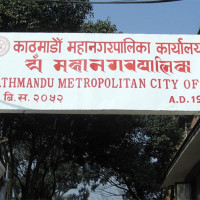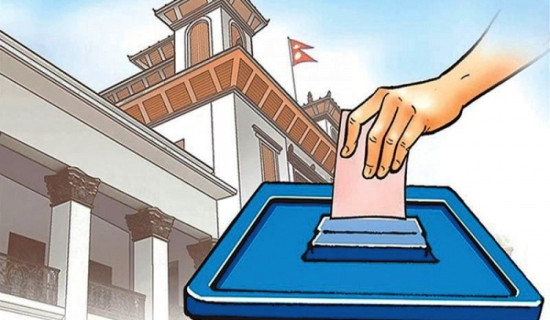- Friday, 19 December 2025
Light to moderate rains forecast during Dashain
Kathmandu, Sept. 29: Travellers heading home for Dashain are advised to carry umbrellas and brace for a muddy celebration, as the Department of Hydrology and Meteorology (DHM) has forecast light to moderate rainfall during the festival.
As the monsoon system continues to influence the country’s weather, there is a likelihood of rainfall during the Dashain festival, said Sandip Adhikari, a meteorologist at the Meteorological Forecasting Division.
With the festivities approaching, the DHM has also issued a special bulletin on Saturday, forecasting rainfall on Ashtami, Nawami and Dashami.
“The forecast currently covers only up to Dashami, but precipitation may continue beyond the festival as the monsoon has yet to withdraw from the country, even though its official withdrawal date is October 2,” said Adhikari.
“The monsoon’s influence is currently weak, but its withdrawal from Nepal remains uncertain. Current analysis suggests the system will linger throughout this year’s Dashain,” he said.
According to the special bulletin, on Ashtami (September 30) light to moderate rainfall is likely in some hilly areas of Bagmati and Gandaki provinces, as well as in hilly and Tarai regions of Koshi Province. On Nawami (October 1), some hilly regions of Koshi, Bagmati and Gandaki provinces may experience light to moderate rainfall.
On Dashami (October 2), light to moderate rain is likely in hilly areas of Bagmati, Gandaki, Lumbini and Karnali provinces, in hilly and Tarai areas of Koshi Province, and in a few places in Madhes and Sudurpaschim provinces.
Madhukar Upadhya, a senior watershed expert, said that Nepal has often experienced “hile Dashain” (muddy Dashain), but the frequency of heavy rainfall during the festival is on the rise. “The monsoon pattern is shifting, with both its onset and withdrawal occurring at different times than before,” he said.
According to him, a cyclone is likely to form in the Bay of Bengal around Dashain, which could affect central and western Nepal with heavy rainfall.
“Last year, the monsoon had withdrawn, but there is a growing trend of intense rainfall even after the monsoon’s withdrawal. As a result, the intensity of rain over short periods has increased across the country,” Upadhya said. He also advised travellers to be cautious and recommended making journeys during the daytime.
Meteorologist Adhikari said that weather is tracked according to the English calendar, while Dashain’s date varies each year. As a result, the festival sometimes coincides with the monsoon, bringing rain, while in other years it falls after the monsoon has withdrawn.
The monsoon arrived earlier than usual this year. Typically, it enters the country around 13 June, but in 2025, it started from the eastern region on May 29, about 15 days earlier than the normal date.
However, it took around 23 days for the monsoon to spread fully across all seven provinces. By 20 June, the Meteorological Forecasting Division confirmed that the monsoon was active nationwide, despite a brief retreat caused by a strong low-pressure system over East Asia.
The monsoon season in Nepal usually lasts from 13 June to 2 October, bringing an average of 1,472 millimetres of rainfall.
















